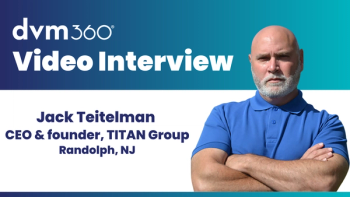
Employee theft: Take appropriate action
The legal rule: Without a conviction, there is no criminality shown. If there is no criminality shown, you cannot safely make public accusations of that crime.
A lot of practice owners out there feel as if some of their employees are giving them so little work for their pay that it is practically criminal.
That's an unfortunately occasional happenstance. So, what happens when you strongly suspect that you have an employee who is an actual criminal?
The problem puts the practice owner in a much more precarious position than simply having to place a help-wanted ad in the newspaper or online.
As with many areas of veterinary law, the very best defense against employee dishonesty is good preparation and management protocols instituted before any suspected employee criminality arises.
A failure to put systems and rules in effect that provide for individual accountability can make the problem of worker theft or embezzlement enormously difficult and stressful.
In order to fully appreciate the importance of pre-planning for employee dishonesty, consider for a moment the complications involved when the suspicion of wrongdoing first arises:
Inventories of certain items are mysteriously low, or costs for a certain category of products show up much higher than normal for a month or quarter.
Monthly or quarterly revenue drops versus last year's figures in the face of what feels like normal or strong sales and services provided.
An employee comes to you with a story.
You become privy to speculation and gossip regarding a certain employee.
Naturally, there are those instances where missing funds from a deposit show up, or the practice receives a notice of unpaid payroll taxes from the state or federal government. The parties involved in those situations are much easier to pin down. The tougher predicament is when an owner is riding on suspicions that are not so easily verified.
To catch a thief
Once employee theft is suspected or confirmed, the next and most important step is simply to get the losses to stop. In the interest of cutting these losses and getting the practice back on track, many practitioners undertake aggressive steps often at their legal peril.
Instantaneous, poorly considered "knee-jerk" responses can be risky.
For example, the owners of a practice with unexplained inventory or money losses will begin to try to develop a short list of suspects. In so doing, they may undertake employee interviews with a built-in prejudice, in order to develop a case against the person(s) they believe most likely to be guilty. This is where they must be extremely careful.
The landmines
The legal problems begin when Doc calls in Sally to get her take on the disappearance of product or cash. Sally makes it clear that she has concerns about the receptionist Betty, who has been acting suspiciously. As the questioning continues, Betty might be spending a lot of money lately, and she is suspected of using illegal drugs.
Regardless of the allegations, Doc needs to proceed with great care as the conversation unfolds.
In this case, the questioner assumes the risk of later being accused of pressuring or encouraging Sally to slander her co-worker. At the same time, the interview can take a different turn in which the owner relaxes and the conversation "loosens up" because he is hearing what he expects to hear. What can happen at that point is the blurting out of legally inappropriate comments such as, "Yeah, I'm sure she's been stealing money, too."
While a defamatory statement may seem innocuous when made to a trusted employee in confidence, there is no way to be sure that it won't surface later during a lawsuit brought by the employee/suspect.
While the implicated employee might be as guilty as sin, the accuser/employer still has to be extremely careful.
Even if he puts together extensive and persuasive evidence against a thieving employee, and he consequently resigns, the employer could still be liable for defamatory statements and writings made regarding the departing employee.
The legal rule: Without a conviction, there is no criminality shown. If there is no criminality shown, you cannot safely make public accusations of that crime.
Firing the suspect
An even larger problem arises in the event that thefts continue unabated, and the practice owner or management is not able to develop adequate evidence against a specific person to present to police. This situation led to the feeling that the only way to get the losses to stop is to fire the person who seems most likely to be responsible for the missing funds or property.
Even if the person fired is the correct one, it is probably inadvisable to reveal to that employee that you suspect them of wrongdoing. Without adequate proof of illegal behavior, it is necessary to identify other failings in the employment relationship that justified termination.
In order to protect against a later lawsuit by the fired employee, a good and verifiable reason or reasons (other than unproven suspicion of theft) must be cited. Even better, though, would have been a system to prove the illegal act.
Each of these points, of course, bring us back to my initial assertion that prevention planning is much more sensible than instituting some type of intra-office witch hunt that contaminates employee morale and could lead to sticky legal entanglements
Some simple steps can go a long way toward avoiding the problems involved with employee dishonesty.
Six small steps
1. Do not entirely abdicate bookkeeping responsibilities to your bookkeeper, even if he or she has been a faithful employee for many years. Don't lose familiarity with how the books are kept and how receipts and disbursement are accounted for.
2. Ask your accountant to come in occasionally for an unannounced mini-audit of the reception records and books. The cost of having this done once in a while is well worth it. These mini-audits help buy continuing honesty when certain parties might consider deviating from the straight and narrow.
3. Arrange for an occasional inventory of non-schedule drugs and other supplies by the technician who keeps track of controlled substances. The hospital's inventory should be compared to the computer statement on inventoried products. Also, it is advisable to have controlled substances occasionally inventoried by a staff member who would not ordinarily do that task.
4. If you have no inventory control system, institute one. Even if it is rudimentary, it keeps staff from thinking that you are ignoring product sales and shrink.
5. Keep good employment records and be up-to-date on periodic employee reviews and critiques.
6. Consider consulting a private investigator if you have persistent losses. Also, consult a local attorney regarding what questions your state law permits you to ask employees and what areas are prohibited in the realm of employee theft.
Dr. Allen is a partner in Associates in Veterinary Law PC, a law practice specializing in business and legal counsel for veterinarians and their families. He can be reached at
Newsletter
From exam room tips to practice management insights, get trusted veterinary news delivered straight to your inbox—subscribe to dvm360.




